|
|

New Piper Aircraft Co
Bradford, Pennsylvania, oilman Bill
Piper had no experience with airplanes when he joined
the Taylor Aircraft Company's board of directors in the
early 1920s. The Taylor brothers had developed a small,
light monoplane powered by a 20hp Brownbach Tiger Kitten
engine. It was in this machine that the Cub took its
roots.
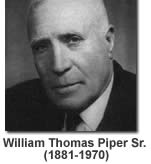
.gif) |
| |
|
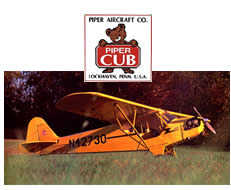
|
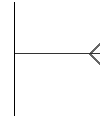 |
 |
|
|
|
World War II made demands
on civilian aircraft manufacturers, and Piper
answered the call by modifying its J-3 designs
for military use. The resulting changes, most
notably the L-4 model, saw extensive use in
training combat pilots. Nearly 6,000 of the L-4s
saw service and four out of every five American
World War II pilots got their start in these
dependable airplanes. |
 |
|
|
 |
 |
| |
 |
|
|
|
This kind of advanced
thinking in Vero Beach led to the expansion of
manufacturing facilities in Florida, and the
introduction of another airplane that was to be
the forerunner of a whole family of successful,
innovative aircraft. The PA-28 Cherokee was
designed there and FAA-certified in October of
1960. It went into production in Vero Beach in
January, 1961.
The single-engine,
four-place Cherokee design became the basis for
more than half of Piper's aircraft in the
decades to follow. Subsequent models, including
the Warrior, Archer, Dakota, Arrow, Seneca and
Saratoga were all based on this ground-breaking
design.
The PA-32, or Cherokee Six,
series came out in 1965 showing off a new
stretched cabin that could accommodate six
people. Their luggage could be stowed in a new
forward baggage compartment, and they enjoyed a
larger cabin interior. There was even a rear
door to make it easy for passengers to be seated
comfortably. The most recent addition to the
PA-32 family tree is the Saratoga II TC,
introduced in 1997.
In 1967 the twin engine
lineup was enhanced with the introduction of the
PA-31 Navajo. This powerful, cabin-class twin
was designed to meet the growing demands for
business travel. From the original, a series of
relatives evolved. There were the Navajo
Chieftain and the Mojave, followed by a lineup
of twin turboprops, the Cheyenne I, the Cheyenne
II and the Cheyenne IIXL.
|

|
 |
 |
| |
 |
|
|
 |
 |
|
|
 |
|
|
|
In
1983, when many manufacturers were pulling back
or calling it quits, Piper introduced a totally
new aircraft design. The PA-46 Malibu
revolutionized personal aviation and came at a
time when the industry truly needed a boost. It
took three years of study and dedication to get
the first Malibu into the air, but this
pressurized, six-place, single-engine aircraft
provides the creature comforts and amenities of
many small business jets, but for a fraction of
the price and operating cost. It immediately
captured the imagination of owner-pilots,
especially those who used their own aircraft for
business. In 1988 an up-graded version, the
Malibu Mirage was introduced. It's 350hp
turbo-charged Lycoming engine immediately pushed
it to the forefront of the industry.
|
 |
|
|
 |
 |
|
 |
|
|
|
 |
|
|
|
Along the way, New Piper has introduced
improved versions of all models, including its
venerable Seneca with the improved version,
Seneca V. While every model benefited from the
improvements made available by the latest in
technology, New Piper also added new models,
including a turbo-charged model to the Saratoga
lineup - the Saratoga II TC
The
New Piper has built on the solid foundation
established in Pennsylvania almost 80 years ago,
and is taking the Piper name to new heights.
Eight decades of history, and yet, the most
exciting time is still ahead. With the Malibu
Meridian and the Piper 6X & 6XT a new era
has again taken shape.
|
 | |
 |
.gif) |
.gif) |
|
 |
 |
|
When
Gilbert Taylor left the company, Bill Piper
brought in a new chief engineer, Walter
Jamouneau, and under his direction the original
Cub was modified to its historic, bright yellow
J-3 version.
In
1937, a fire in the original Bradford factory
devastated the organization, and the company was
moved to an old silk mill in Lock Haven,
Pennsylvania. When the company moved to Lock
Haven, it became The Piper Aircraft
Corporation. |
| |
|
 |
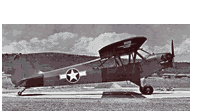 |
| |
|
 |
 |
In
the post-war period, civilian aviation again
took on rapid growth, and advances in technology
kept pace with demand. After building tube
frames and fabric-covered aircraft for 17 years,
Piper introduced its first all metal plane, the
Apache, in February of 1954. It was also Piper's
first twin engine model and the first in a
series to be named after an American Indian
tribe (as a salute to Piper's own American
Indian heritage).
With
the success of the Apache, Piper saw the bright
future for General Aviation and expanded its
research and development capabilities, as well
as its manufacturing base. In 1957 it built a
new R&D facility at the old Naval airbase in
Vero Beach, Florida. The Sunshine State proved
to be an excellent site for experimental flight
testing. The first accomplishment of the new
facility was the introduction of the PA-25
Pawnee, an agricultural spraying aircraft.
|
| |
|
 |
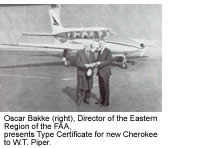 |
| |
 |
| |
|
 |
 |
| |
|
 |
| |
|
 |
As
the progression in the turboprop field
continued, Piper introduced the Cheyenne III in
1979 and later upgraded it to the Cheyenne IIIA.
These powerful aircraft had seating for up to 11
and were able to cruise at 300 knots with a
range of up to 2,000 statute miles on the thrust
of two 720hp Pratt & Whitney
engines.
While they targeted the executive market,
the Cheyennes also found their way into many
training programs, and were used to train pilots
in such organizations as Lufthansa Airlines,
Alitalia Airlines, Korean Air, All Nippon
Airways, Austrian Airlines, and the Civil
Aviation Administration of China
(CAAC).
While the company was built on the
strength of its single engine aircraft, it
excelled in development of twins. In 1971 the
PA-34 Seneca was introduced. This six-place
light twin was built around the Cherokee Six
frame. Since its inception, the Seneca has seen
duty around the world as an air taxi, a reliable
charter aircraft, a dependable trainer for
pilots stepping up to advanced multi-engine
classes, and as a popular choice of the
owner-pilot. Today's Seneca V still fits into
each of these
categories. |
| |
|
 |
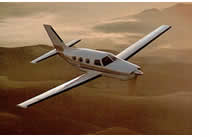 |
| |
|
 |
| |
|
 |
The New Piper
Aircraft, Inc. became a reality in the summer of
1995 when President/CEO Charles Suma, and a
nucleus of employees took over the assets of the
Piper Aircraft Corporation. There were fewer
than 100 employees in that first year but they
embarked on an exciting assignment.
The task was not
an enviable one: Take on all the competitors and
bring the Piper name back to the forefront of
General Aviation. But this cadre of dedicated
people was up to the challenges.
Engineers were
challenged to create an aggressive research and
development program to bring new, innovative
aircraft to market. Customer service
professionals from a variety of industries were
tapped to create a system that provides the best
service possible to every customer around the
world. The organization embarked on a campaign
to recruit the best distribution professionals
around the globe. And the marketing and sales
staff recommitted itself to making New Piper the
leader not only in the owner-flown segment of
the General Aviation market, but the leader when
it comes to supplying the best training aircraft
in the world, as well.
|
 |
 |
| |
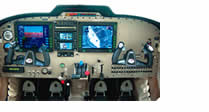 |
| |
|
| |
|
| |
|
| |
|
| |
| | | | | |
|
|
|
